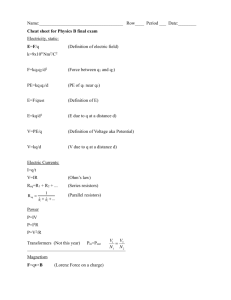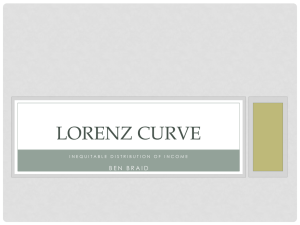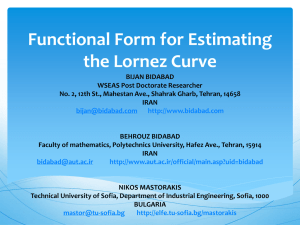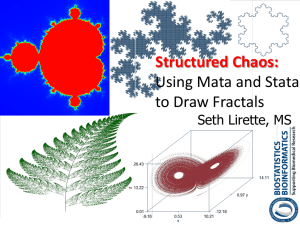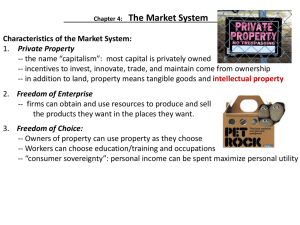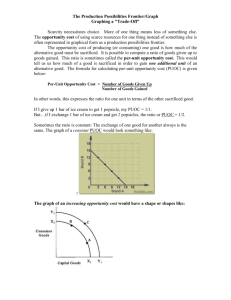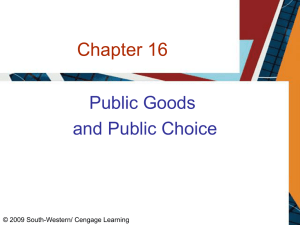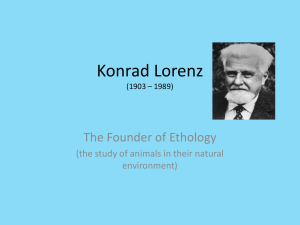File
advertisement
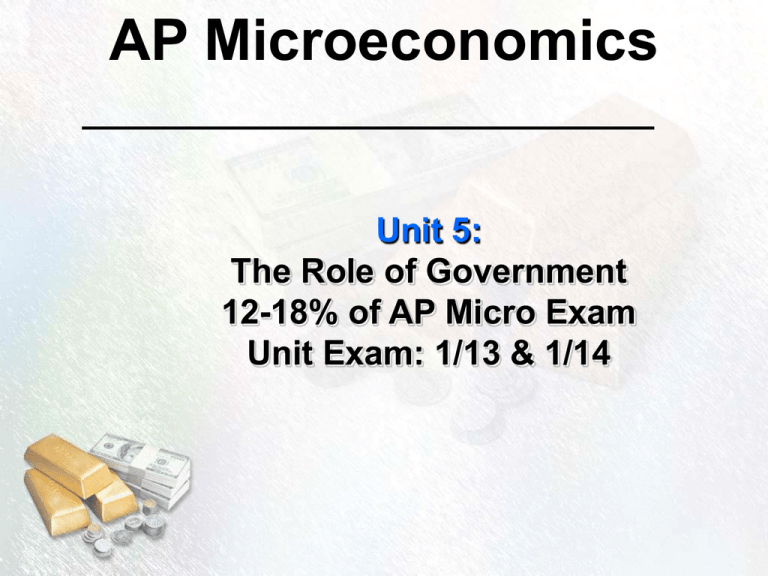
AP Microeconomics Unit 5: The Role of Government 12-18% of AP Micro Exam Unit Exam: 1/13 & 1/14 What is the difference between a public good and a private good? Exclusion (denied access unless you pay) vs. Non-Exclusion (everyone can use, cannot exclude benefits for those who do not pay) Public Good: Shared consumption (nonrivalrous) One person’s consumption of a good does not reduce the usefulness to others vs. Non-shared consumption (rival good) A true public good is non-rival (shared consumption) and nonexcluding Some Examples 1. Hamburger: 2. Exclusion & Rival 3. TV Show: 4. Exclusion but Nonrival 5. Park: 6. Nonexclusion and Nonrival 7. College Education 8. Exclusion but Nonrival 9. National Defense 10. Nonexclusion and Nonrival What is a free-rider? Someone who uses the good but doesn’t pay for it. Free riders occur when there are non-exclusion and shared consumption (public goods) Spraying for mosquitoes Police & fire protection National defense Street lights Externality •When one’s actions impose a cost or benefit on the well-being of a 3rd party. •Externalities result in market failure. 1) Positive: external benefit is imposed on someone (CASUES UNDERPRODUCTION) (examples: gardens, restored historic buildings, research) 2) Negative: external cost is imposed on someone (CAUSES OVERPRODUCTION) (examples: exhaust from autos, barking dogs, noise from airplanes) Let’s See What You Got… • From memory, create a detailed correctly labeled graph detailing a positive externality. Accurately label all curves and deadweight loss. • Now draw a negative externality graph. Follow the above instructions. January 8, 2013 1. Review parts A,B,C from packet 2. Notes: Per-Unit or Lump Sum Tax/Subsidy to correct externalities & the Coase Theorem 3. HW: Parts D and E from Activity 5-2 (tax/subsidy) and all of Activity 5-3 (Coase Theorem) Taxes and Subsidies • • • • • • • • • Per-Unit vs. Lump-Sum Parallel logic between subsidies and taxes. Per-Unit policies affect firm’s MC, so output would be affected. Per-Unit policies also affect AVC and ATC curves by shifting them upward. AFC not affected! Per-Unit policies lessen output and quantity Lump-Sum policies affect firms TFC curves, therefore affecting AFC and ATC curves. Firm’s output (MR=MC) remains the same! Lump-Sum policies reduce firm’s total profit but do not reduce quantity. Profit-Maximizing Firm in Perfect Competition Coase Theorem •Remember, externalities lead to inefficiency… •Can disputes causes by externalities be solved privately? •The proposition that, in a conflict of property rights, if private parties can bargain without cost over the allocation of resources, they can solve the problem of externalities on their own. January 9, 2014 1. Review HW (Activity 5-2 parts D and E and Activity 5-3 on Coase Theorem) 2. Continue Unit 5 Notes: Taxation 3. HW: All of Activities 5-4 (Economic Efficiency dealing with Externalities), 5-5 (Taxation) and 5-6 (Income Tax) 2 Principles of Taxation • Benefits-Received Principle • Those who benefit for services provided by the government should be the ones who pay for it • VS. • Ability-to-Pay Principle • Individuals/Businesses with larger incomes should pay more taxes. Tax Classification • 1. 2. 3. • • • 3 of them: Progressive: Person with higher income pays larger % of income in taxes than person with smaller income. (Income tax) Proportional: Everyone pays same % of income in taxes regardless of income. Regressive: Person with lower income pays larger % of their income in taxes than person with higher income (gas tax, sales tax) Tax Incidence: Reveals which group, the consumers or producers, will pay the price of a new tax. When supply is more elastic than demand, the tax burden falls on the buyers. If demand is more elastic than supply, producers will bear the cost of the tax. Example: the demand for cigarettes is fairly inelastic, which means that despite changes in price, the demand for cigarettes will remain relatively constant. Let's imagine the government decided to impose an increased tax on cigarettes. In this case, the producers may increase the sale price by the full amount of the tax. If consumers still purchased cigarettes in the same amount after the increase in price, it would be said that the tax incidence fell entirely on the buyers. January 10, 2013 1. Finish Unit 5 Notes: Income Inequality and the Lorenz Curve 2. Last AP Micro Assignment: Activity 5-7 3. Q & A/Review HW, etc. Income Inequality and Distribution of Wealth Income Inequality Some households earn more income than others… In 2012, the average American earns roughly $52,000. What’s wrong with using the average? How does the government measure distribution of income? THE LORENZ CURVE The LAST AP Micro graph to learn!!!! The Lorenz Curve Percent of Income 100 80 Perfect Equality 60 40 20 0 20 40 60 80 Percent of Families 100 The Lorenz Curve Percent of Income 100 Lorenz Curve (actual distribution) 80 Perfect Equality 60 55 40 30 20 15 5 0 20 40 60 80 Percent of Families 100 The Lorenz Curve Percent of Income 100 Lorenz Curve (actual distribution) 80 Perfect Equality 60 55 40 The size of the banana shows the degree of income inequality. 30 20 15 5 0 20 40 60 80 Percent of Families 100 20 The Lorenz Curve Percent of Income 100 After Distribution 80 Perfect Equality 60 55 40 The banana gets smaller when the government redistributes income 30 20 15 5 0 20 40 60 80 Percent of Families 100 21 Gini Coefficient The Gini coefficient is equal to the area marked A divided by the sum of the areas marked A and B. that is, Gini = A / (A + B). GREAT NEWS… YOU ARE DONE WITH AP MICRO!!!! 23
